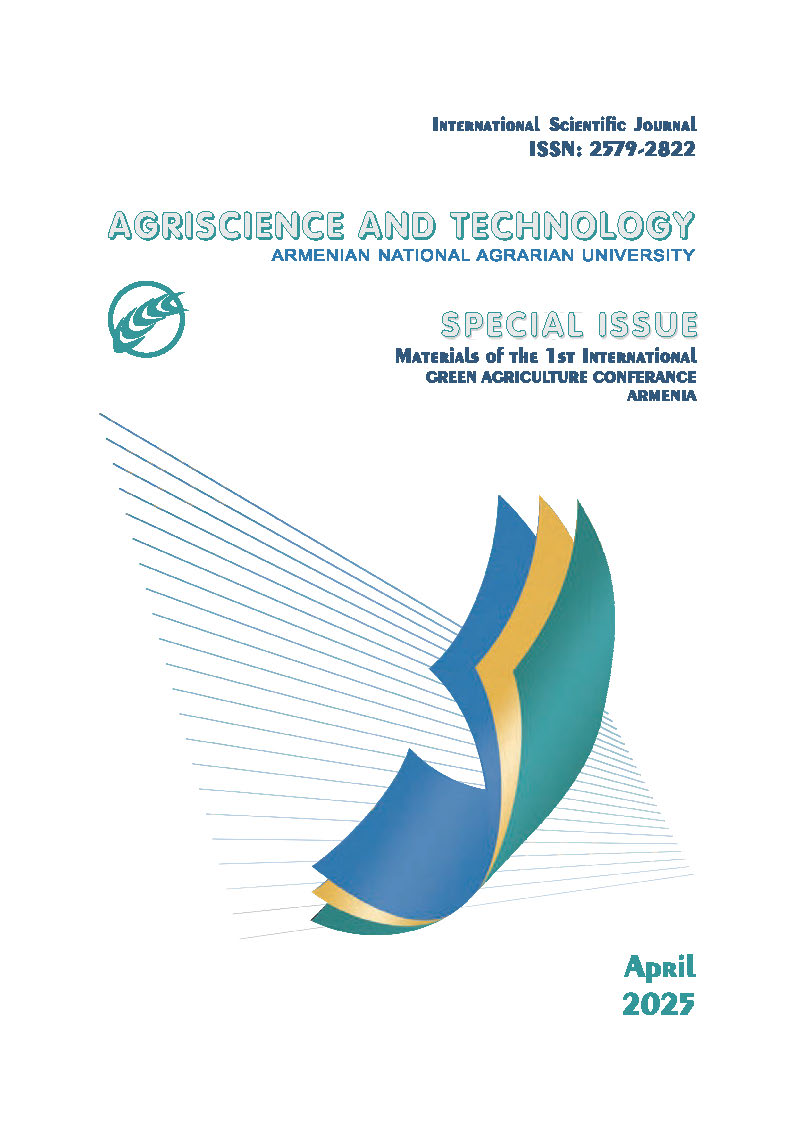Establishment of Windbreaks in Semi-Arid Zones as a Method to Ensure the Sustainability of Agroecological Transformations
DOI:
https://doi.org/10.52276/25792822-2025.sp-43Keywords:
agroecological transformations, , anthropogenic pollution, climate change, sustainable practices, windbreaksAbstract
In the context of ongoing global climate change, establishing protective forest layers that enhance the stability of agroecosystems has become increasingly essential. This issue is particularly pressing in arid regions such as Armenia. Prior to the 1990s, the creation of protective forest layers was a widespread practice across the Republic of Armenia, primarily aimed at reducing wind intensity and preventing the intrusion of cold air masses into agricultural and residential areas. In addition to serving as windbreaks, these forest layers played a vital role in regulating the soil’s water regime and creating a favorable microclimate for the growth and development of both plant and animal life. Despite their proven importance, most of these protective forest layers have been removed across the country—including in semi-desert zones—due to shortages of fuel and energy resources. As a result, no new protective layers have been established since.However, agro-ecological transformation now presents an opportunity to develop sustainable agro-food systems, making the restoration of windbreaks in the Ararat Valley not only desirable but necessary. Such practices will support environmental sustainability while also delivering substantial socio-economic benefits. This study presents an analysis of agroecological indicators, based on which a model for the establishment of windbreaks in the study area has been developed.
Downloads
Published
How to Cite
Issue
Section
License
Copyright (c) 2025 Marine Markosyan, Hasmik Khurshudyan, Elmira Zakaryan, Astghik Hovhannisyan

This work is licensed under a Creative Commons Attribution-NonCommercial 4.0 International License.
Creative Commons Attribution-Non-Commercial (CC BY-NC). CC BY-NC allows users to copy and distribute the article, provided this is not done for commercial purposes. The users may adapt – remix, transform, and build upon the material giving appropriate credit, providing a link to the license. The full details of the license are available at https://creativecommons.org/licenses/by-nc/4.0/.





